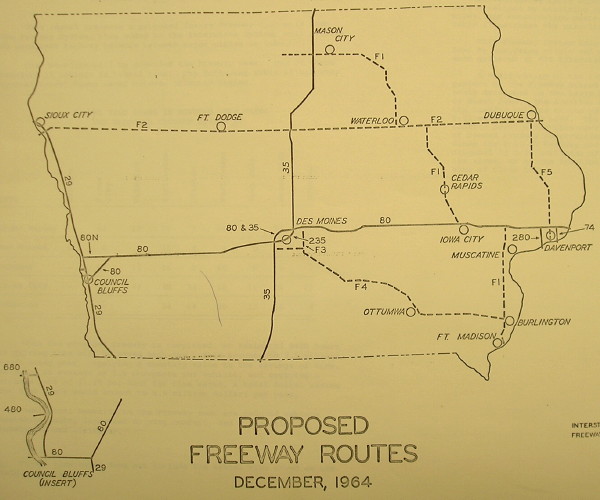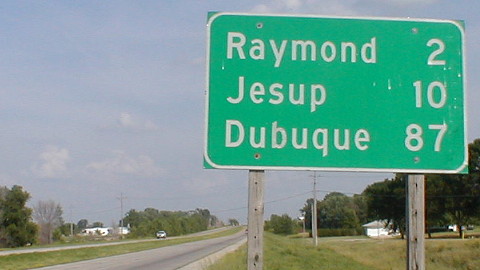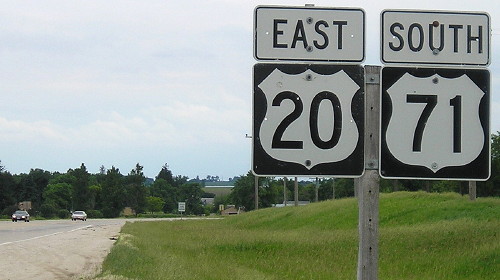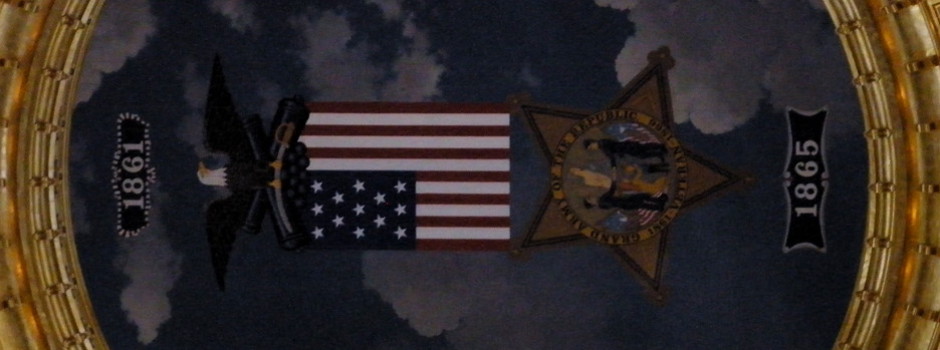
In 1964, the Iowa Highway Commission made a sort of wish-list for freeways that would be built in addition to the interstates. With some changes to the corridor paths, this has been the root of the state’s operating plan for nearly half a century. It was expanded greatly in 1968; US 151, IA 60, IA 330, and semi-substantial parts of US 30 and 63 made it off the drawing board from that group.

Dubuque Road/old US 20 on the east side of Waterloo, June 25, 2002. This four-lane road built in 1958 ceased to be part of 20 in 1984.
Construction on US 20 steadily progressed from 1969 to 1991. The upgrading of other corridors in that 1964 plan really took off after 1993. A switch to mainly expressway construction, with at-grade intersections, lessened costs.
But after 1991, US 20 saw only bits and pieces. In 2000, it was built toward both US 65 and IA 14 and left a giant gap in the middle. Finding the best way to go through this gap, the Iowa River Greenbelt, had perplexed the DOT and the Iowa Highway Commission before that. Through delays, protests, and budget troubles, “no-build” was the chosen alternative for decades.

Iowa Gov. Tom Vilsack at the US 20 opening ceremony at the Iowa River bridge, Aug. 22, 2003.
A new type of bridge construction with minimal environmental impact was used to span the Iowa River, solving the Greenbelt puzzle and completing that long-awaited link in the upgraded highway in 2003. (Here’s a page I created of the opening ceremony with photo galleries.) Western and west-central Iowa, though, were still waiting.
Western Illinois is still waiting. The US 20 Association wishes to promote the highway as an alternative to I-80 and I-90, but it needs to be upgraded through the southernmost part of the hilly Driftless Area. Illinois Department of Transportation engineer Steve Robery wrote to me on April 12, 2012, that the Galena bypass alone needs $200 million more. For comparison, the entire 90 miles of US 20 between US 169 and Moville was estimated at $450 million in 2006* and $518 million in 2009**.

US 20 and US 71 north of Early, June 12, 2005. This is facing the new interchange area.
Today, at the same time this post went live, 26 miles of a new US 20 expressway opened in Sac and Calhoun counties. The highway is now four lanes from just west of US 71 to the foot of the Julien Dubuque Bridge. The expressway has left behind the last segment of 20 that was paved in Iowa, from Rockwell City to Lytton in 1938. As of noon today, the only pieces in about the same place as 1926 are the 4 miles west of the east US 59 junction and the sections around Moville. Much of those are incorporated into four-lane segments, meaning they won’t be going anywhere.
Notably, the opening makes Sac City the first county seat located more than a mile from a state-maintained road. It is a big change from 1935, when any town above a population of 250 was given a connection to the system. (The last vestige of that ended when the spur routes were killed in 2003.)
Forty-four miles of US 20 in Iowa remain to be upgraded to four lanes. The estimated completion date varies, and it could be a while. Today, though, the road’s path finally has been bent into the straight line drawn across the state 48 years ago. We’re not at the finish line, but we can see it from here.
